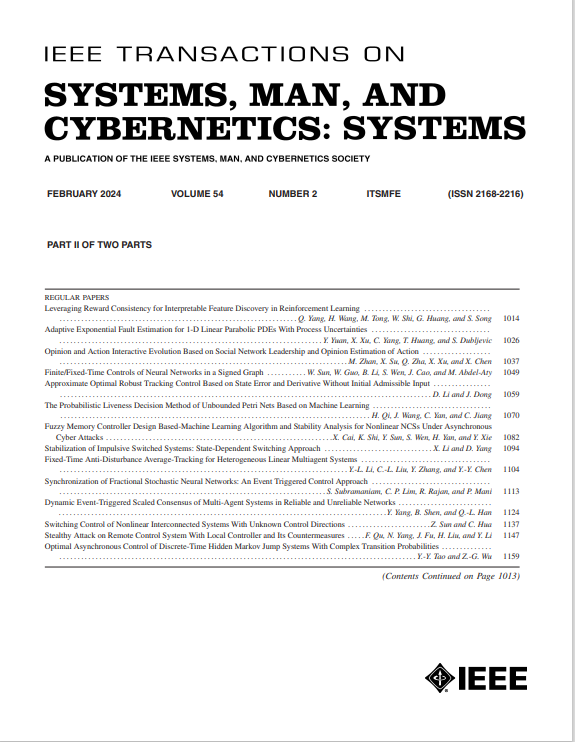A Similar-Niching-Based Differential Evolution for Constrained Multimodal Multiobjective Optimization
IF 8.7
1区 计算机科学
Q1 AUTOMATION & CONTROL SYSTEMS
IEEE Transactions on Systems Man Cybernetics-Systems
Pub Date : 2025-07-21
DOI:10.1109/TSMC.2025.3582852
引用次数: 0
Abstract
In constrained multimodal multiobjective optimization problems (CMMOPs), the existence of discrete and confined feasible regions bring great challenges to current multiobjective optimization evolutionary algorithms (MOEAs). To address these challenges, this article proposes a constrained multimodal multiobjective differential evolution algorithm, which incorporates a similar-niching-based reproduction operator and a novel environmental selection mechanism. The proposed algorithm initiates by segregating the population into distinct niches, thereby promoting independent evolution within each niche. This segmentation enhances the exploration of multiple discrete feasible regions, thus improving the capacity to find diverse Pareto optimal solutions. Moreover, the algorithm selects the most similar niche to collaboratively generate solutions, further enhancing its ability to generate effective feasible solutions. To improve the diversity within the population, the proposed environmental selection mechanism gives preference to solutions that enhance the distribution of the next-generation population. By considering the diversity in both two spaces, the population retains more pareto optimal solutions. Based on the Friedman test results of the comparison experiment with other representative algorithms and the champion algorithm of the CEC2023 CMMOPs competition, the proposed algorithm attained the top ranking, thereby reinforcing its demonstrated superiority. Meanwhile, the proposed algorithm is used to solve the constrained multimodal multiobjective location selection problem and results show its superiority.约束多模态多目标优化的相似小生境差分进化
在约束多模态多目标优化问题(cmops)中,离散和受限可行区域的存在给现有多目标优化进化算法(moea)带来了巨大挑战。为了解决这些问题,本文提出了一种约束多模态多目标差分进化算法,该算法结合了基于相似生态位的繁殖算子和一种新的环境选择机制。该算法首先将种群划分为不同的生态位,从而促进每个生态位内的独立进化。这种分割增强了对多个离散可行区域的探索,从而提高了找到多种Pareto最优解的能力。此外,算法选择最相似的小生境协同生成解,进一步增强了算法生成有效可行解的能力。为了提高种群内部的多样性,所提出的环境选择机制优先考虑提高下一代种群分布的解决方案。通过考虑这两个空间的多样性,人口保留了更多的帕累托最优解。通过与其他代表性算法和CEC2023 CMMOPs竞赛冠军算法对比实验的Friedman测试结果,本文算法获得了第一名的排名,进一步加强了其所展现的优势。同时,将该算法应用于求解有约束的多模态多目标选址问题,结果表明了该算法的优越性。
本文章由计算机程序翻译,如有差异,请以英文原文为准。
求助全文
约1分钟内获得全文
求助全文
来源期刊

IEEE Transactions on Systems Man Cybernetics-Systems
AUTOMATION & CONTROL SYSTEMS-COMPUTER SCIENCE, CYBERNETICS
CiteScore
18.50
自引率
11.50%
发文量
812
审稿时长
6 months
期刊介绍:
The IEEE Transactions on Systems, Man, and Cybernetics: Systems encompasses the fields of systems engineering, covering issue formulation, analysis, and modeling throughout the systems engineering lifecycle phases. It addresses decision-making, issue interpretation, systems management, processes, and various methods such as optimization, modeling, and simulation in the development and deployment of large systems.
 求助内容:
求助内容: 应助结果提醒方式:
应助结果提醒方式:


